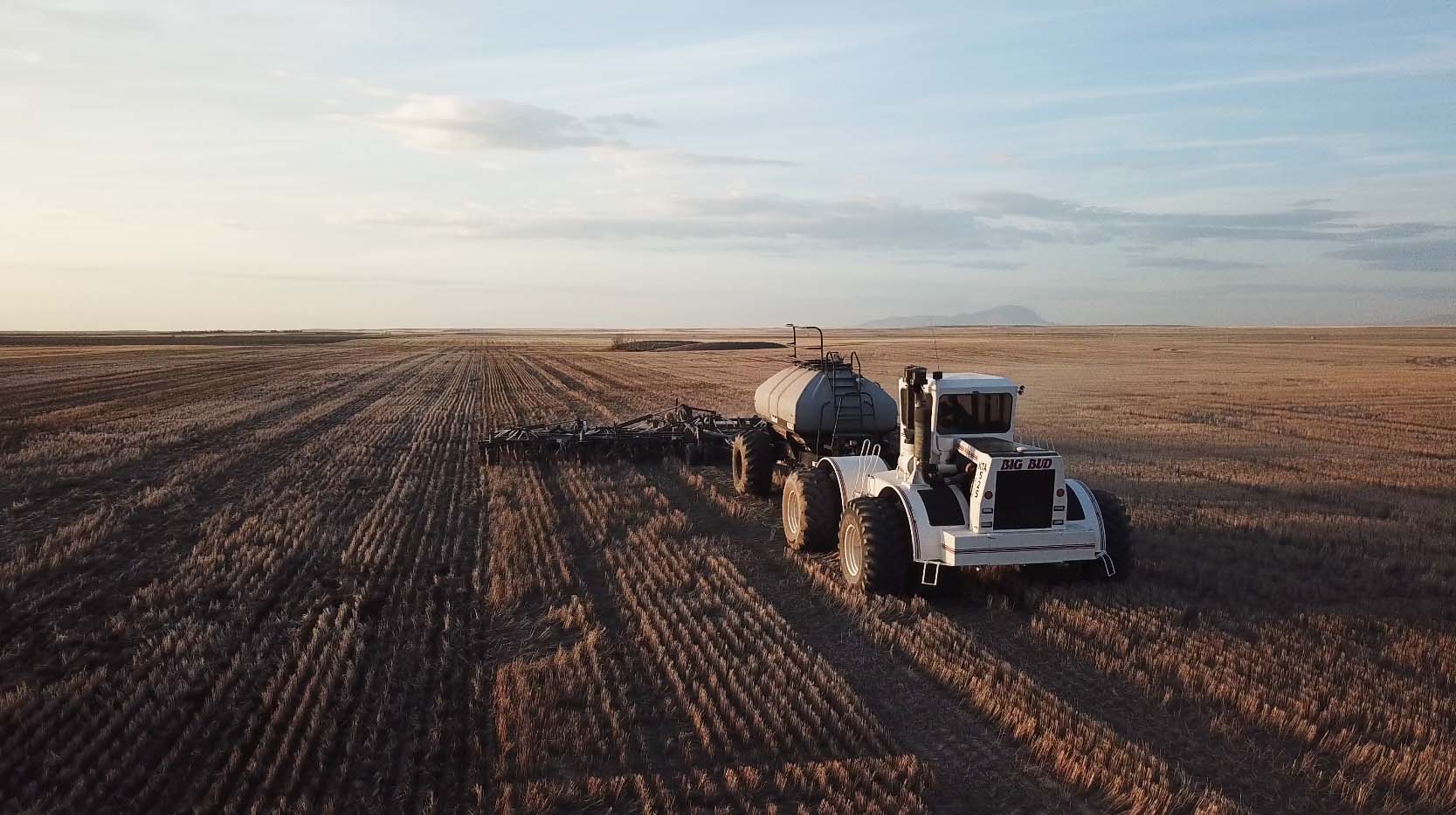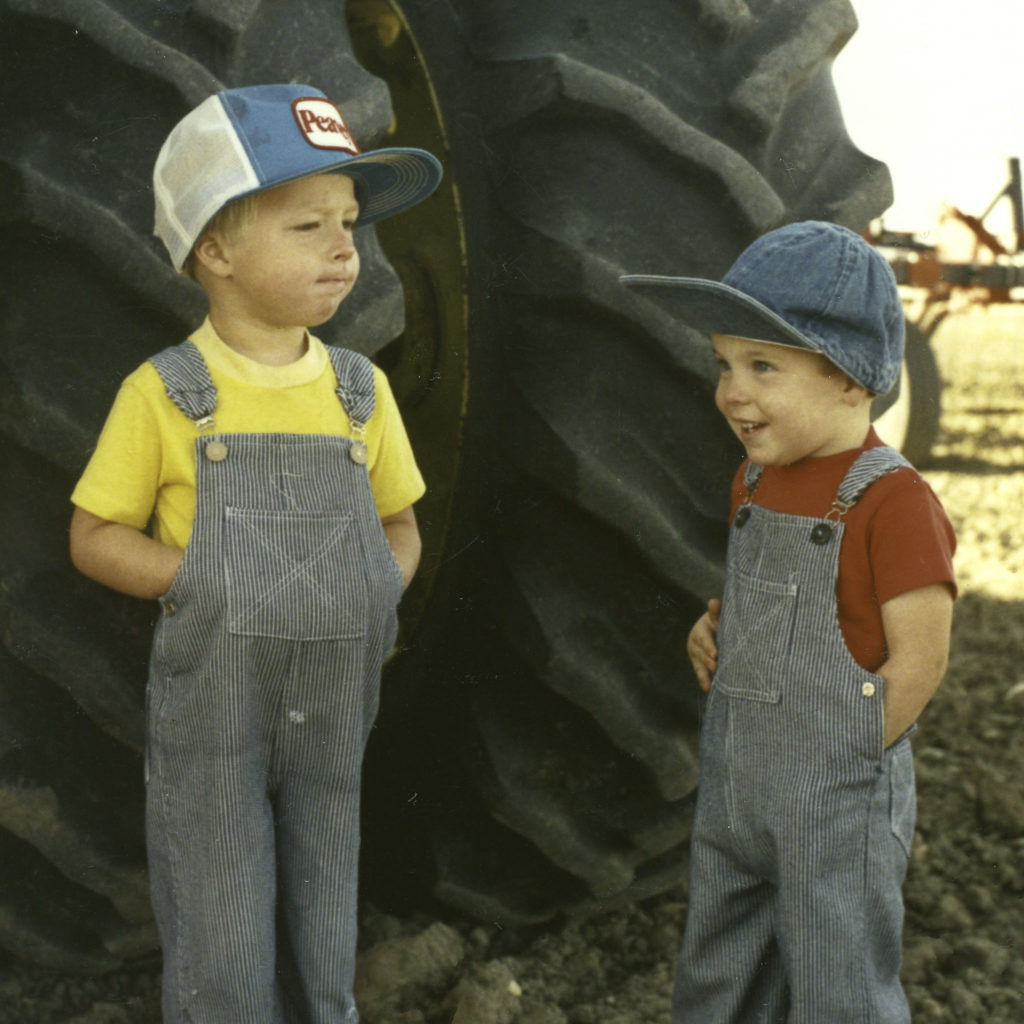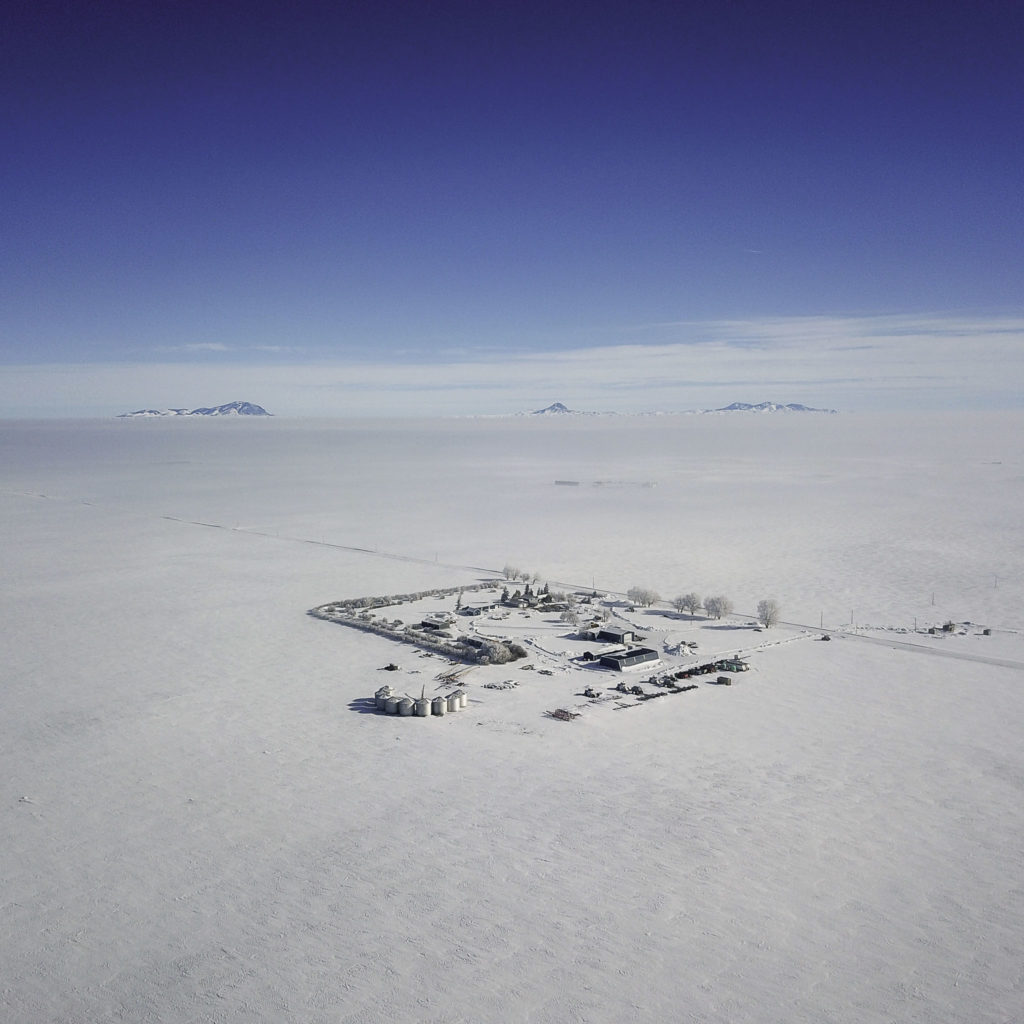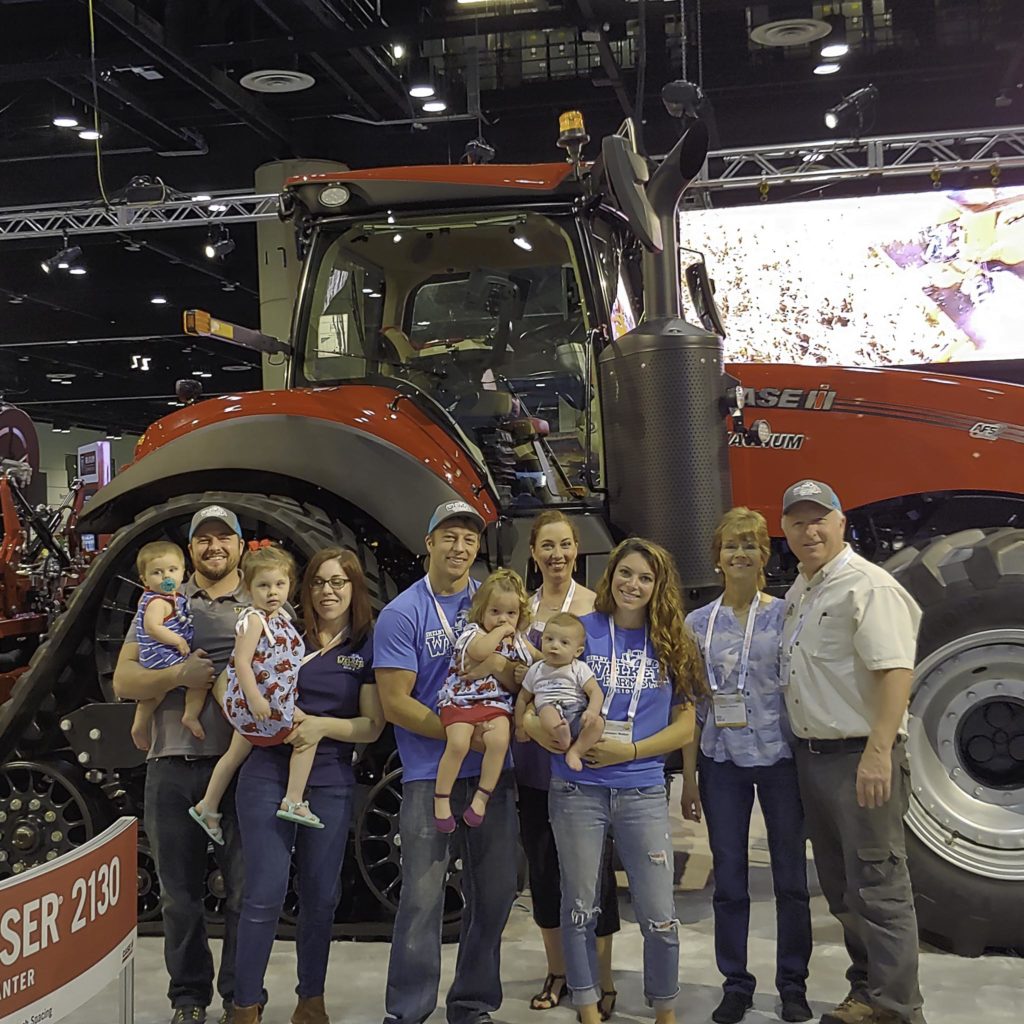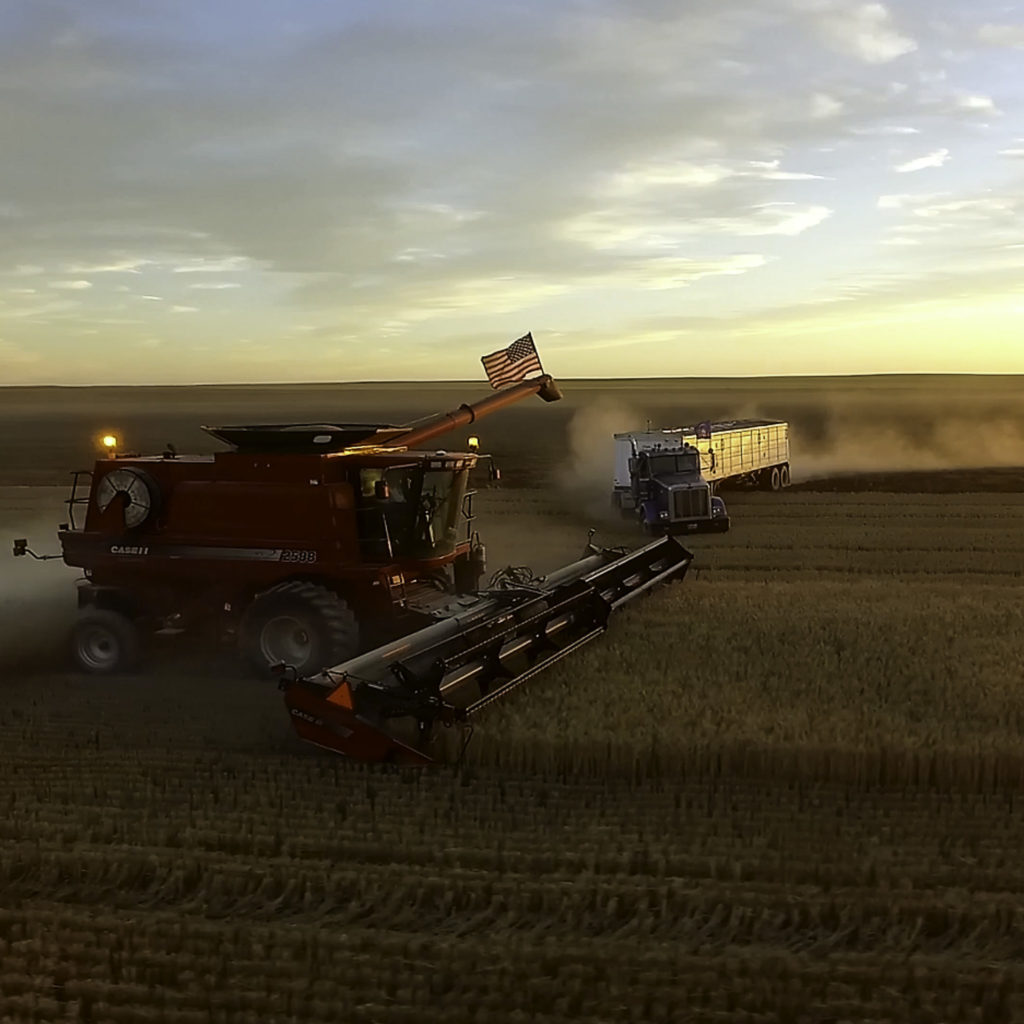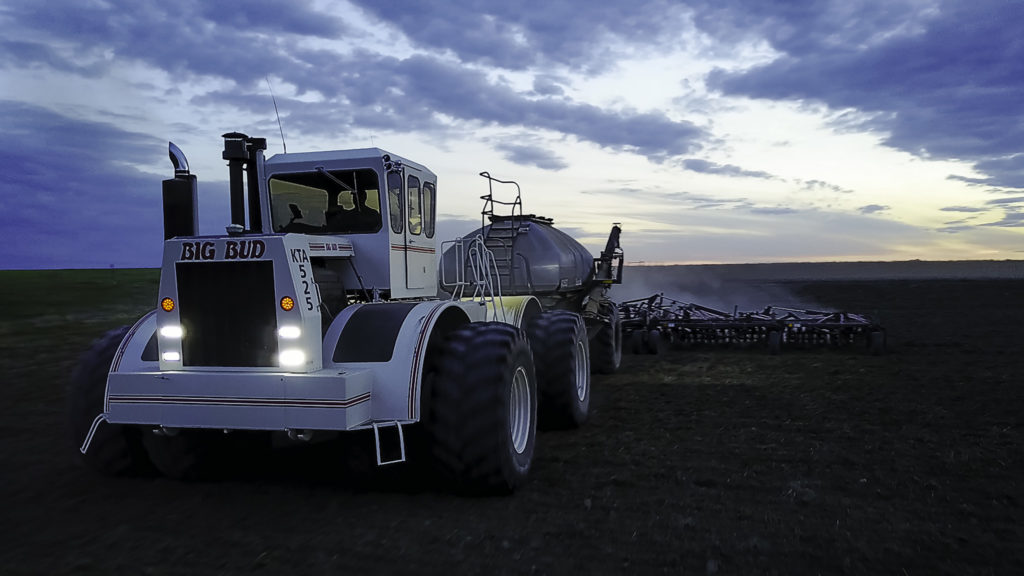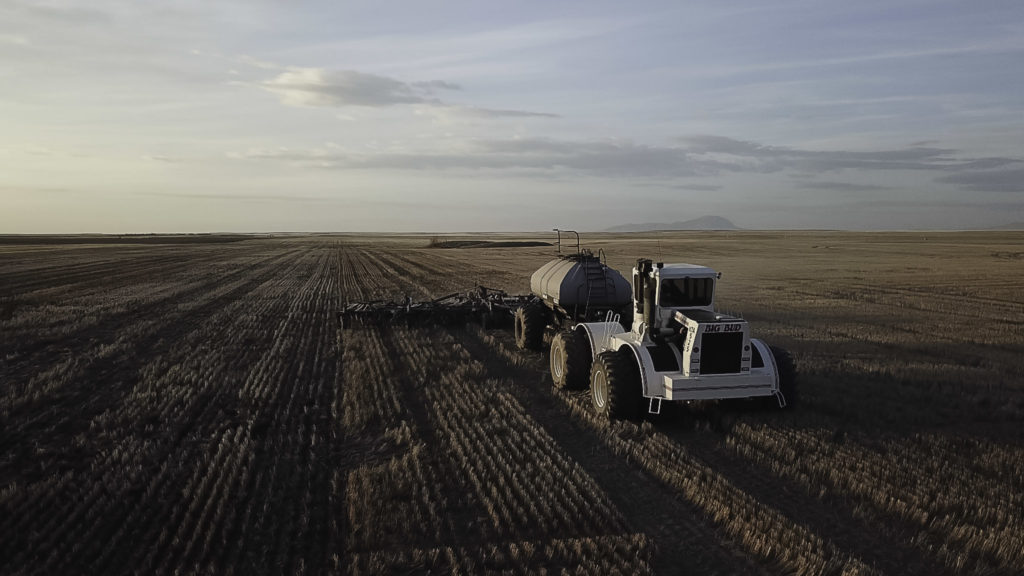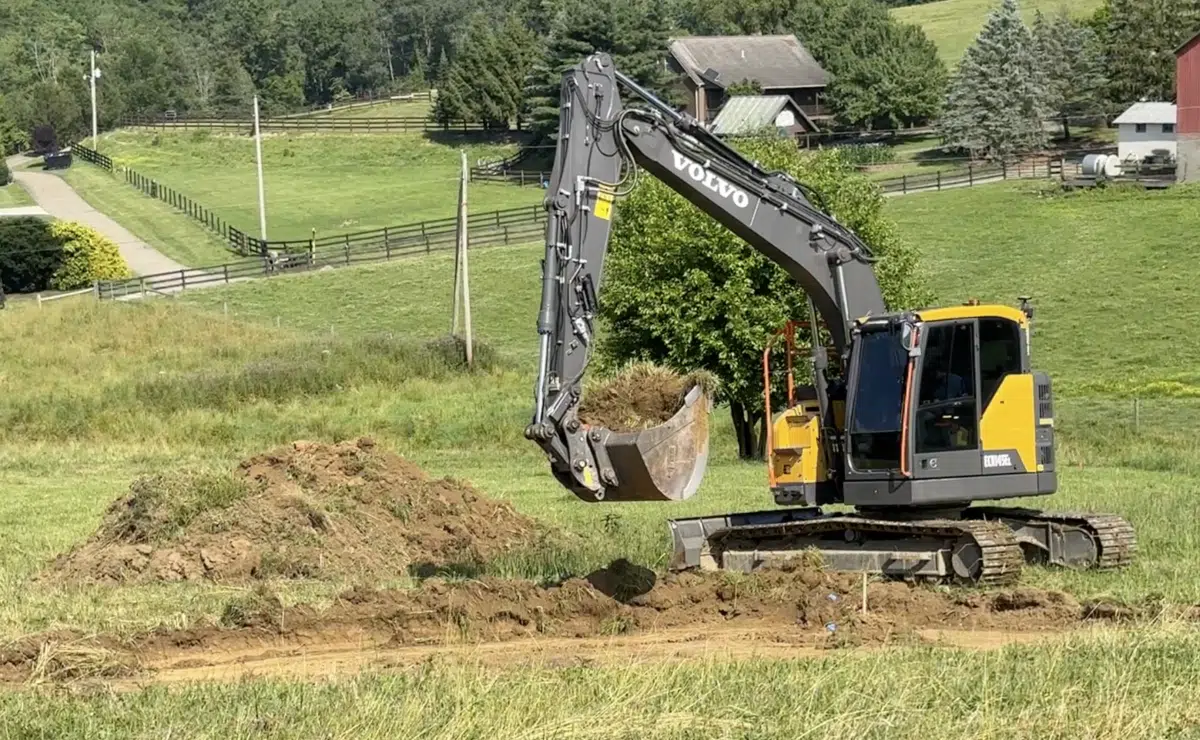by: Elaine Tomski
How much horsepower does it take to work an Amish farm of 80 acres? Depending on the task, anywhere from two to eight horses will get the job done. So, how much horsepower do you suppose is required to work 10,000 acres? Nick Welker knows. The story he shares about four generations of the Welker family farm near Shelby, Montana, is, in one word, BIG.
BIG OPPORTUNITY
In the early 1900s, some forty years after President Abraham Lincoln instituted The Homestead Act of 1862, Montana still had land available for homesteading. Nick Welker says, “It was also the roughest territory in the nation. That’s why people chose other areas to settle first.” According to Nick, 320 acres were deeded per homestead. Claimants were required to build a dwelling, live on the land, and cultivate it. After five years of improvement to the farm, the original filer became the property owner, free and clear, except for a small registration fee.
Nick’s great-great-uncle Tom was the first to come up from Oklahoma to stake a claim. Nick says, “At that time there were tremendous rains. The grass was high as a horse’s belly. It looked like paradise. So, Tom went home to recruit others in the family.” He wanted them also to claim a piece of the beautiful land he had discovered. “His brother, my great-great-grandpa, John, came up shortly after and got the piece of property right next to him. That’s our homestead. That’s how our family farm started.” The year was 1912, and Welker Farms has been growing bigger ever since.
“When ample rains ceased and times got harder,” says Nick, “great-great-uncle Tom decided to sell his 320 acres to his brother, my great-great-grandpa John.” Other homesteaders also found north central Montana farming to be too difficult. Nick says, “Since that time, people have been selling land and the Welker family has been buying land. Now you can’t see buildings for miles because, as people sold their acreage, the farm’s buildings were knocked down and fields were put in their place. Out here, you can go for five, six, seven miles before seeing another farmyard.”
- Childhood photos
- Winter at Welker Farms from the air.
- Tradeshows are family business.
- Tractor prepares to pull along the Case IH Combine at Welker Farms in Montana.
BIG FARM
One hundred seven years later, the Welker family owns part and leases part of the 10,000 acres they steward. Surely, John Welker had no idea how big the farm would grow when he handed it down. Today, Robert Welker, with sons Nick and Scott, are the third and fourth generations on the farm. A good number of farmland purchases and leases have been acquired over the past few years. The equipment is larger, and so are the grain bins. The family has also been growing, lately. Two lovely daughters-in-law were added to the mix as Robert and Karen welcomed Nick’s wife, Kathleen, and Scott’s wife, Sarah, to the family. Nick says, “I have two kids, and my brother has two kids, so there are four grandkids, and we all live on the same compound. I’m only a stone’s throw away from my brother and my parents.”
Do you wonder how vast 10,000 acres is? Are you curious to know how Welker farmers get equipment from one end of the property to the other? Nick says, “Our main farmyard is pretty central to the land we farm. Our farthest piece is probably about ten miles away, but most of the land is within five miles, easy.” Moving large, wide equipment across ten miles may seem difficult. However, the surrounding gravel roads are adequate and lightly traveled. They can drive equipment from place to place without the concern of meeting oncoming vehicles. When they do meet a traveler on the road, they pull their big rigs over and greet the rare passerby with a wave and a smile.
Muddy roads are not a problem near Shelby, Montana. The average rainfall for the area is a mere 12 inches per year. Nick says, “There are parts of Montana that are very wet and can grow corn, but where we’re at, we’re very limited on moisture.” So, they plant low moisture crops such as spring wheat, winter wheat, and yellow peas. Nick says, “In the last couple of years we’ve planted lentils and chickpeas, also known as garbanzo beans. This year we may try some mustard seed and canola, too.”
How long does it take to plant and harvest 10,000 acres? Concerning planting season, Nick says, “It all depends on when the frost line dips low enough and the ground is dry enough, but we typically start the beginning of April. It usually takes three weeks to a month to plant.” Harvest used to begin in August, taking the same amount of time—three to four weeks—to accomplish. However, now that the Welkers are trying out new crops whose growing seasons differ, the harvest can begin mid-July and not end until early September. Nick is hopeful for the future of harvesting. He says, “We actually just updated our harvesters, so we should be able to do it faster.”
Farming is always a challenge. Robert, Nick, and Scott are stretched pretty thin. But Nick says, “We can do it. We just need to put in the time.” During the planting and harvesting seasons, they will hire a few additional people to help get the job done. The biggest challenge for Nick comes from the unknowns. “I’m thirty-three, and I still feel like I’m constantly learning. Learning financial stuff, learning new farm practices, learning equipment technology; it’s just constant learning about how to make decisions.”
After completing high school, Nick went to school in Denver, Colorado, for four years to get his degree in aviation. He thought he’d be taking a different path, at least for a while. But, as Nick says, “Low and behold, I ended up back on the farm.” All of Nick and Scott’s farming education comes from growing up on the farm. Even their extensive mechanical training has happened right there.
- Big Bud farming in the evening
- Big Bud tractors at work seeding.
BIG TRACTORS
Not many companies build tractors powerful enough to pull massive unfolding cultivators, packers, and seed drills across 10,000 acres. Much like the Welker family has an interesting past, their BIG BUD tractors have quite the story, too. Nick says, “We recently sat down with the founder, who shared the history. The company started in Havre, Montana, about an hour and a half east of us.”
Before there were large-horsepower tractors in the area, people were using bulldozers to pull big equipment through the fields. The Wagner Tractor Company of Havre was the first to build all-wheel-drive articulated tractors, which bend in the middle, “large enough for the fields out here,” says Nick. According to the website at www.wagnertractors.com, Wagner Tractor was purchased by FWD Corporation in 1961, forming FWD Wagner. They built tractors until the end of the 1960s when a major equipment company bought them out and effectively shut them down. Nick says about the buyout company, “They put the patents on the shelf and scrapped everything.”
The Wagner dealership in Havre was left stranded, and owners Wilbur Hensler and Bud Nelson lost out. They decided to build their own articulated tractors. Instead of the Wagner yellow, they painted their tractors white and named them BIG BUD. BIG and BUD after Bud Nelson, because he was a big guy. Nick says, “So they started building BIG BUDS from scratch and kept building them bigger and badder, with more horsepower. They became legendary.” BIG BUD tractors were built up to the mid-1980s, “until several factors caused the company to close their doors, never to re-open,” says Nick. “They produced 520 tractors, total.”
BIG BUD’S were built to last forever and were made simple enough to repair easily. Nicks says, “They were built in Montana of pure iron. All of the parts of the engines and transmissions are truck and mining parts. So, they’re available. I can go down to the parts store and get just about anything for them. It’s not like they’ll wear out, because all of the stuff on them is still used today, and if it isn’t used, you can retrofit something else on them pretty easy. It’s like Legos, basically. You just pull stuff off and put new stuff on.” Nick adds, “My great-uncle bought number three.” That means the Welker family owns the third BIG BUD ever made. Nick says, “And we still love it.” Because the tractor worked so well, they purchased a second one. Finally, says Nick, “In the 2000s, my dad bought a third one.” Their largest BIG BUD weighs a whopping 55,000 pounds and the newest addition to the Welker Farms BIG BUD family is BIG BRUTE. Built to resemble a Series 3 BIG BUD tractor, it’s a one-of-a-kind sprayer.
Now that you’ve learned about BIG BUDs, you must also realize why the Welker brothers need to understand mechanics. Nick says, “We’ve learned a lot over the years. My dad and grandpa were fairly mechanically inclined, but we’re doing a lot more now than we ever dreamed of doing. My brother Scott is pretty fearless. If he doesn’t know how to do it, he finds out how to do it. We just learn by asking experts around us. We’ll call shops and mechanics. They tell us dos and don’ts, and we’ve learned from trial and error. We’ve done things the wrong way and the right way.”
The Welker’s must have been right many times because they’ve successfully increased the horsepower on all three of their BIG BUD tractors. To give you an idea of how big and how powerful their tractors have become, look at the following comparisons.
The Series 1 tractor began with 250 horsepower. Now it yields 435.
The Series 2 tractor began with 450 horsepower. Now it yields 525.
The Series 3 tractor began with 525 horsepower. Now it yields 600.
That’s an increase of 285 horsepower. The Welker’s BIG BUDs are stronger than ever before.
Let’s do the math and answer the question posed at the beginning of this article. How much horsepower is required to work 10,000 acres? 435+525+600=1,560 horses. Whoa! If you have 1,560 horses on an Amish farm, imagine how much hay and oats you need to produce. Even more frightening is how much manure you must shovel and spread. Let’s call that a big mess!

BIG GOD
The members of the Welker family will agree that their provision comes from a big God. Looking back, Nick can see answers to prayer. He says, “Me finding my wife, raising a family. The farm continuing to grow. Some prayerful decisions were made. I don’t think it was of ourselves.”
Four generations ago, faith was not part of the family. Nick says, “When my great-great-grandpa John started the homestead, I don’t think there were any beliefs among them. Grandpa James was not into faith, either. They were just hard-working individuals. You’re born on a farm. You work the land. That was their only purpose.” It wasn’t until Nick’s dad met the Lord—and Nick’s mother—at college that faith came to the farm. Robert and Karen brought Nick, Scott, and their two sisters up in a Christian home with Christian values. Nicks says, “From then on, all of us have been serving the Lord faithfully. Faith has become the pinnacle of our farm. We all go to the same church. We’re all Jesus-believing and love the Lord.” They share their faith, so people know they’re Christians. One of Nick’s sisters has even taken her faith across the globe. She’s a missionary in the Czech Republic.
BIG LEGACY
In recalling the family genealogy, Nick says, “Great-great-grandpa John had nine kids when he came out here. Out of that nine, two brothers (James, my grandpa, and Howard) stayed to farm. They built it up.” The two brothers farmed together for many years until Howard retired. “In the mid-eighties, grandpa James passed the farm on to my dad,” says Nick. Robert is the third generation. Nick and Scott count as the fourth generation of the family to farm since it began in 1912.
The Welker’s have quite a farm legacy. Each generation has benefited from life on the farm. Nick remembers, “Growing up we had chickens, turkeys, pigs, goats, horses, cats, dogs, and pheasants. They were mostly for our education and fun, not for revenue.” The farm doesn’t have grazing land, fences, or access to water for livestock. The dry climate doesn’t support such things. Nicks says, “Now we just have chickens, dogs, and cats. When our kids get older, we will probably have more animals for them.” Nick wants his children to learn responsibility and to understand their source of meat.
Speaking of where meat comes from, the Welker’s also have a hunting legacy to pass down. Nick says, “When the season comes, we hunt a bunch and fill our tags. We love venison. We try to tag enough to fill our freezers. It’s fun, and we trophy hunt, too.” Aside from deer, the Welker’s hunt elk and antelope. They’ve had to eliminate some pesky coyotes, as well.
A favorite winter sport their grandpa James has passed down to his grandsons is ice fishing. Nick says, “It’s something fun to do in the wintertime when it’s twenty below, and the wind is blowing. There’s not much else you can do outside.” The Welker’s go with friends to some area lakes. Nick says, “It’s a really fun experience.” The lakes are stocked, the fish are big, and the water is clear. “It’s like looking down into an aquarium. There’s a little fish house, and you have a heater. You’re inside with your friends and family, just pulling fish out of the ice. It’s a blast!”
But, there’s something even more important to Nick than the legacy of preparing the soil for a good harvest or educating children about animals or passing down hunting and fishing skills. That important legacy is one of making his children’s hearts ready to hear the word of God, understand it, and receive it. This is the most essential harvest to a Christian parent and the Lord.
Jesus said, “But he that received seed into the good ground is he that heareth the word, and understandeth it; which also beareth fruit, and bringeth forth, some an hundredfold, some sixty, some thirty” (Matthew 13:23).
Nick says, “I look at my daughter or son, and I think, That could be a Billy Graham right there. What the Lord is doing through me may give them a zeal for serving the Lord, and they’ll do something to affect God’s Kingdom. They’re going to grow up in a very wicked generation, and they need to be equipped with everything we’ve got so they can make it through. And not only make it through, but be a light.” Robert and Karen’s decision to serve the Lord had a significant effect on their children, and now on their grandchildren. What a legacy!

BIG OPPORTUNITIES CONTINUE
All farmers experience good years and some not so good years. The Welker family is no exception. Nick says, “Recently, farming has been harder. Still, overall, our farm is a pretty healthy farm.” Like other farmers, the Welker’s do what they can to come alongside family, friends, and neighbors. From helping with vehicle mechanics to sharing the resources the Lord has provided, success allows this family to pass along the blessing.
Although the Welker family doesn’t live in the vicinity of Montana Amish, they do know plain people in their area. Nick says, “We have a lot of Hutterites and Mennonites in our part of Montana.” When I asked Nick what he’d like to say to our Amish readers, his heart seemed to glow. He said, “Even though we live in different worlds, and our practices of farming and raising a family may be different, our foundation is in Jesus Christ. It’s going to be exciting when we get to meet in paradise. All the earthly life will be gone, and we will be able to rejoice without suffering. The love we’re going to experience in heaven, I can’t wait! I look forward to meeting them someday.”
In the meantime, Nick says, “2019 is gonna be a big year. We’re going to a lot of farm shows.” The National Farm Machinery Show in Louisville, Kentucky, and the Commodity Classic in Orlando, Florida, are just two of the events that will take the family far from their Montana home. Secondly, because Welker Farm has gained notoriety, Nick says, “there’s a chance equipment companies, like Case IH and John Deere, are going to bring out equipment for us to try.” Finally, the boys are excited to refurbish their International 9370 Eagle truck this year. These guys have the biggest toys, don’t they?
Yes, the Welker family will continue to steward 10,000 acres and use their big toys to do the hard work of farming. It’s true their lives center around sowing physical seeds for a good harvest. However, in a more significant way, the Welker family, having heard and received the Gospel, live to scatter the good news onto more soil. Yes, some of the seed will fall on the path, some will land in rocky places, and some will be choked out by thorns. But some seed will land on good soil, and all who have ears to hear will obey and bear fruit.
No matter if success comes from farming the soil in Montana or from the soil of open hearts, the increase comes from the Lord. The Welker’s are sure of one big thing. They owe everything to their Lord and Savior Jesus Christ.
“Yea, the LORD shall give that which is good; and our land shall yield her increase” (Psalms 85:12).
Still curious? Discover more about Welker Farms on YouTube.

